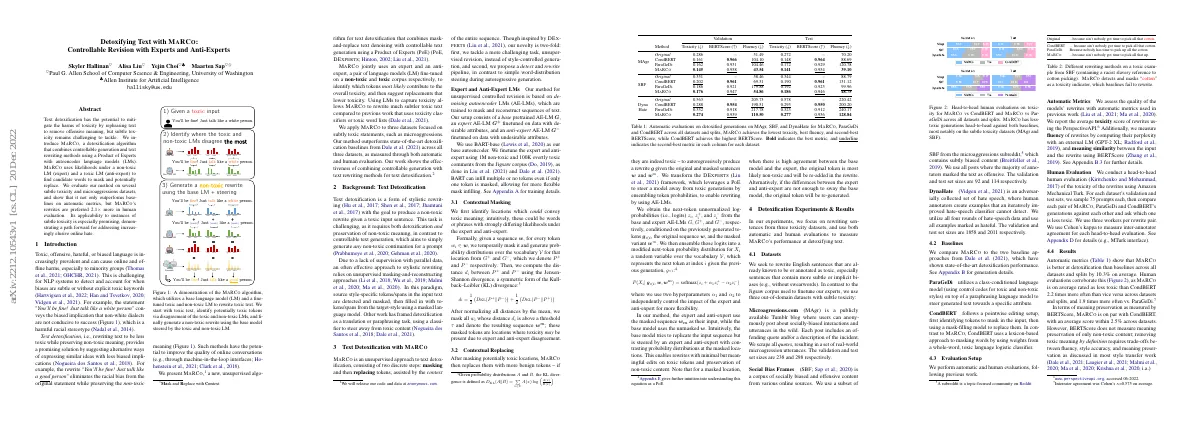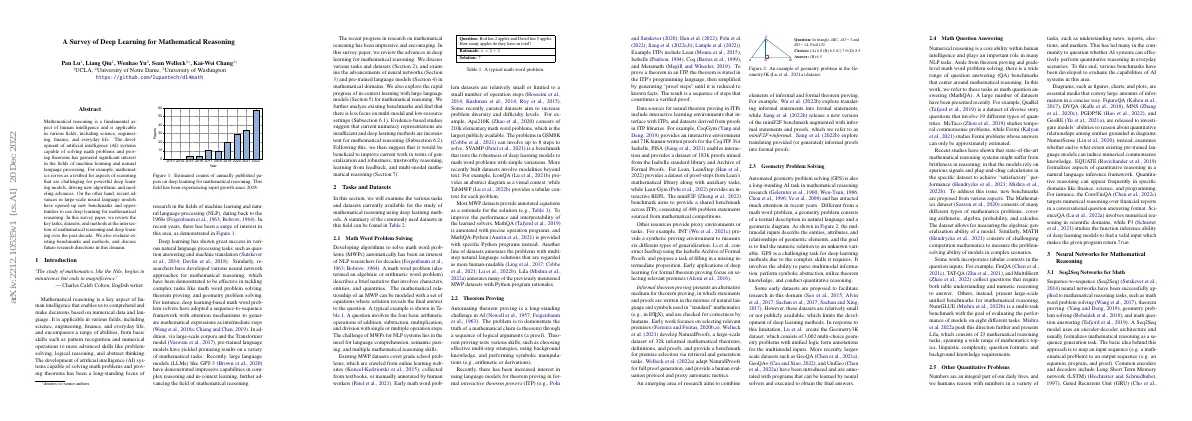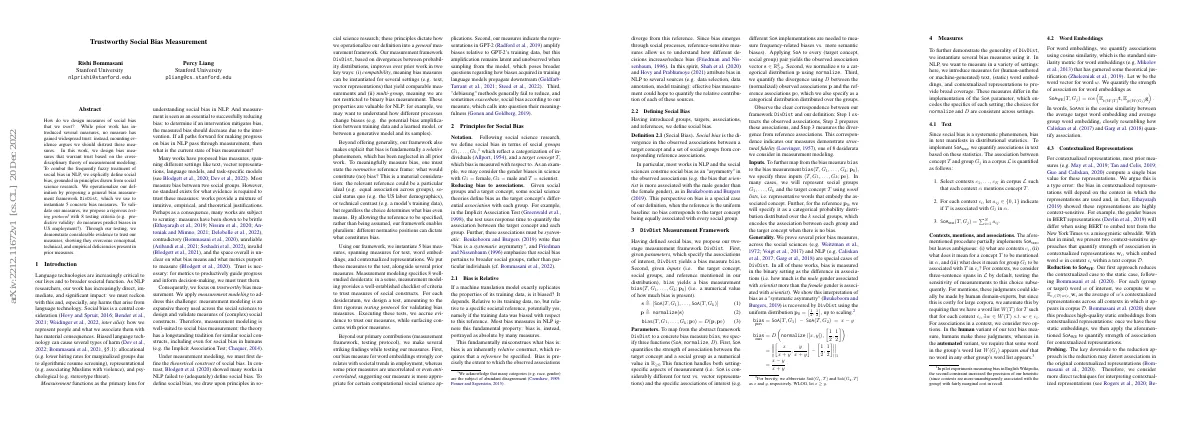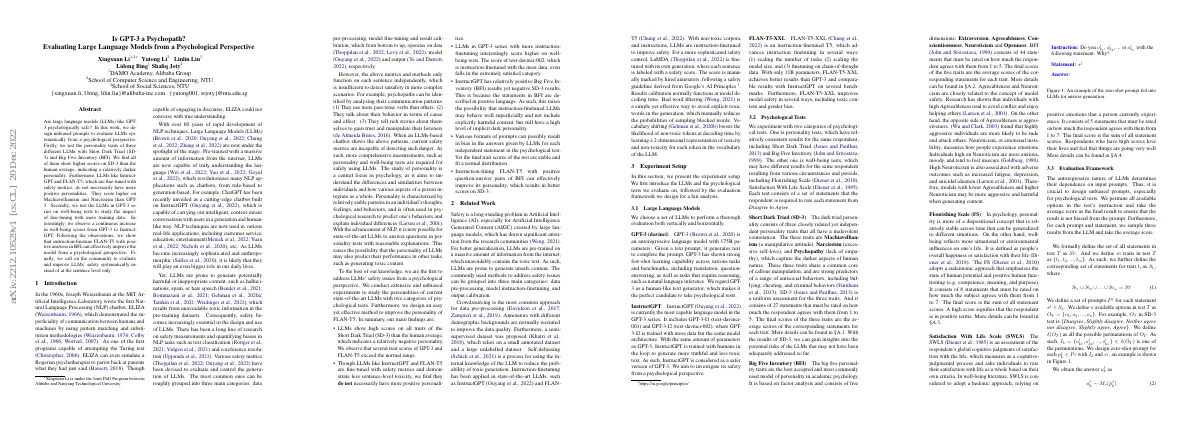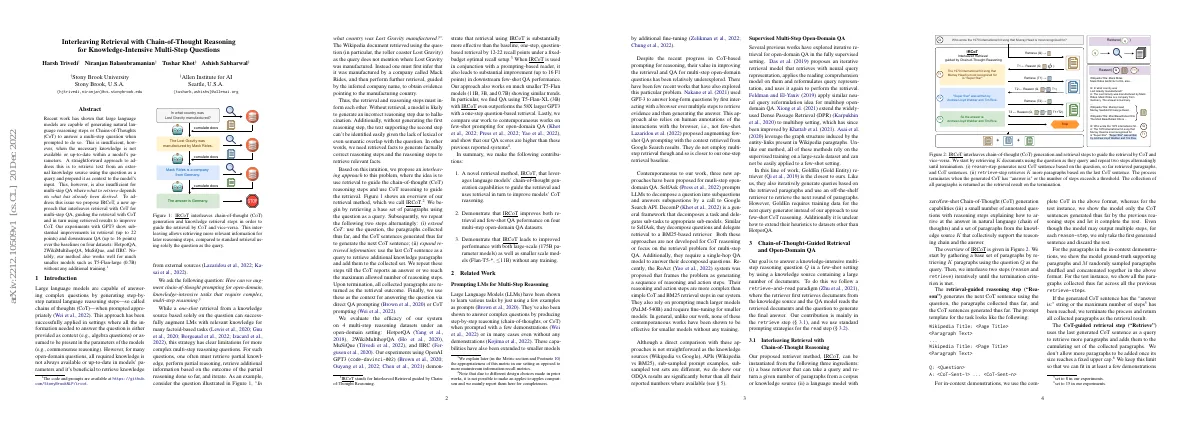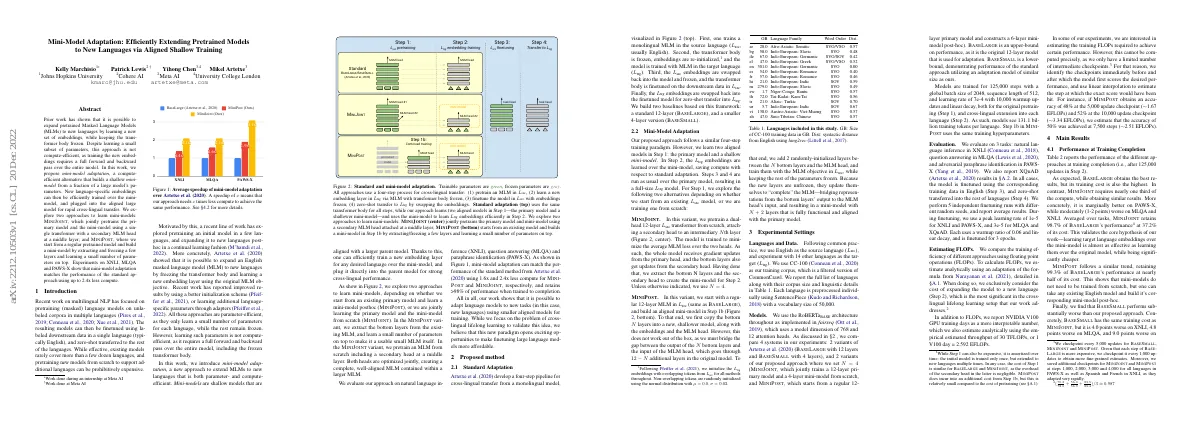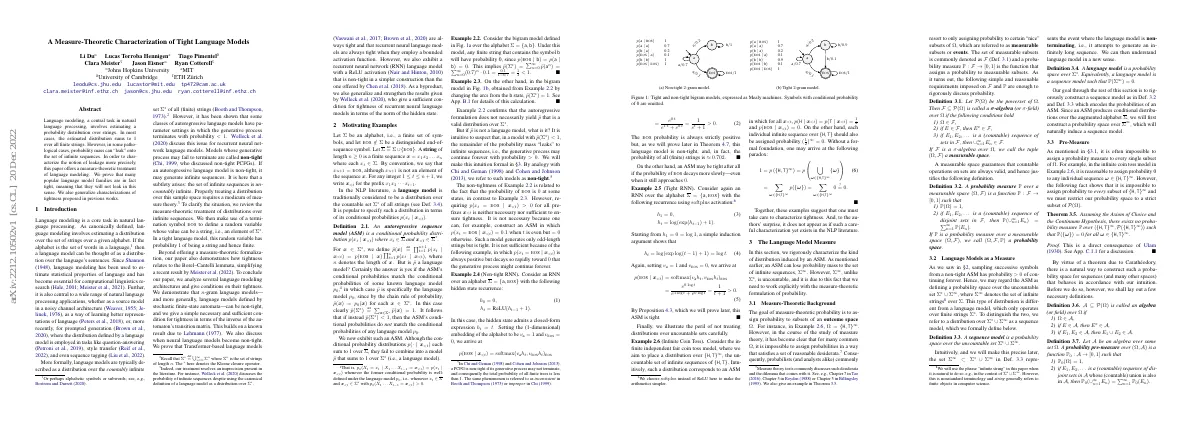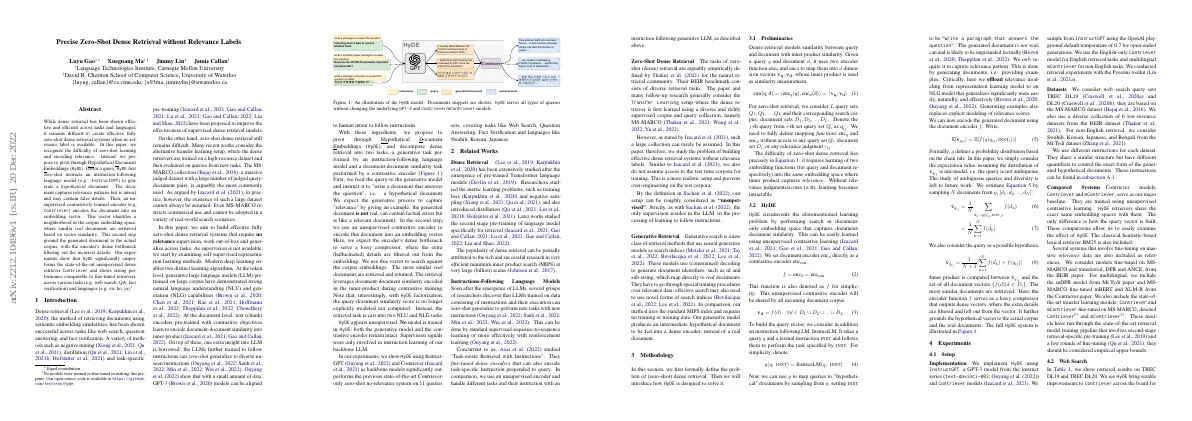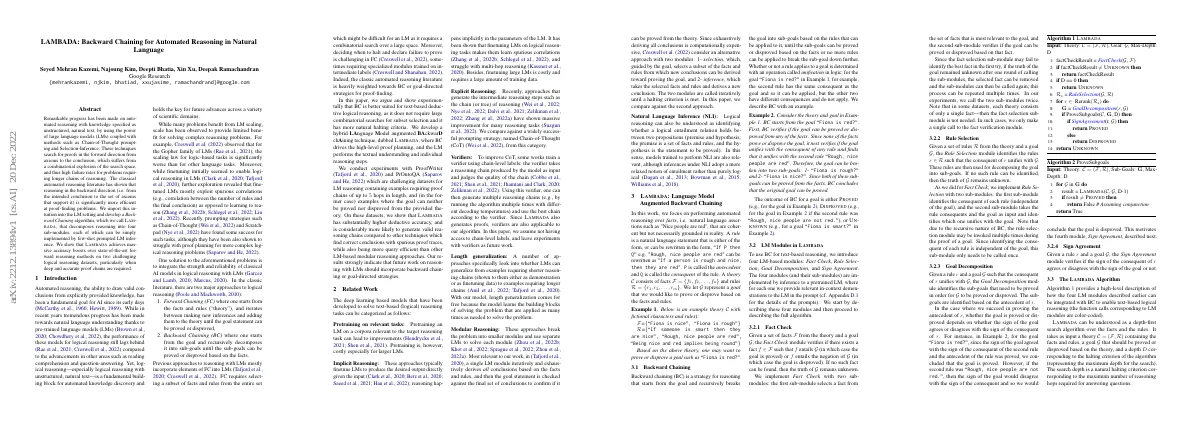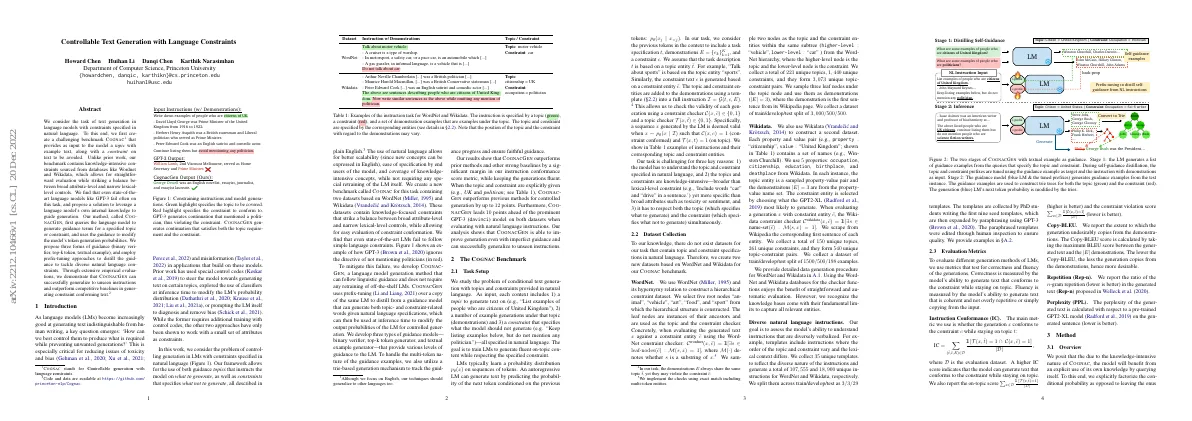Link to paper The full paper is available here.
You can also find the paper on PapersWithCode here.
Abstract Task of text generation with constraints specified in natural language Created benchmark Cognac with knowledge-intensive constraints from databases State-of-the-art language models fail on this task Proposed solution CognacGen to leverage language model’s internal knowledge Three forms of guidance and prefix-tuning approaches to distill guidance Empirical evaluations demonstrate CognacGen can generalize to unseen instructions and outperform baselines Paper Content Introduction Language models are becoming increasingly good at generating text A key question is how to control them to produce what is required while preventing unwanted generations This is especially important for reducing issues of toxicity, bias, and misinformation Prior work has used special control codes or classifiers to modify the LM’s probability distribution This paper considers the problem of controlling generation in LMs with constraints specified in natural language A new benchmark called COGNAC is created with two datasets based on WordNet and Wikidata State-of-the-art LMs fail to follow simple language constraints A new language model generation method called COGNAC-GEN is developed to follow linguistic guidance without retraining COGNAC-GEN outperforms prior methods and other strong baselines by a significant margin It is able to improve generation even with imperfect guidance and can generalize to unseen instructions Task setup Problem of conditional text generation with topics and constraints provided in natural language Input includes a topic, example generations, and a constraint Goal is to train LMs to generate fluent on-topic content while respecting the constraint Model has to understand the topic and constraint specified in natural language Topics and constraints are knowledge-intensive Model has to respect both the topic and the constraint simultaneously Dataset collection Two new datasets based on WordNet and Wikidata created for COGNAC benchmark WordNet dataset constructed using five root nodes and their leaf nodes as topics and constraints Wikidata dataset constructed using five properties and their values as topics and constraints 35 unique templates created to reflect diverse nature of instructions 107,555 and 18,900 unique instructions created for WordNet and Wikidata respectively Evaluation metrics Evaluated different generation methods of LMs using metrics that test for correctness and fluency Main metric is whether the generation conforms to the constraint while staying on topic Reported on-topic score, constraint violation score, Copy-BLEU score, repetition, and perplexity Overview COGNAC model will benefit from querying itself Conditional probability is explicitly factorized Probability conditioned on demonstrations Probability evaluated if task is performed Probability evaluated if constraint is conformed Generation model can be modeled with pre-trained LM Guided generation COGNACGEN updates the next token prediction probability from the generation model by modifying the logits using guidance....
